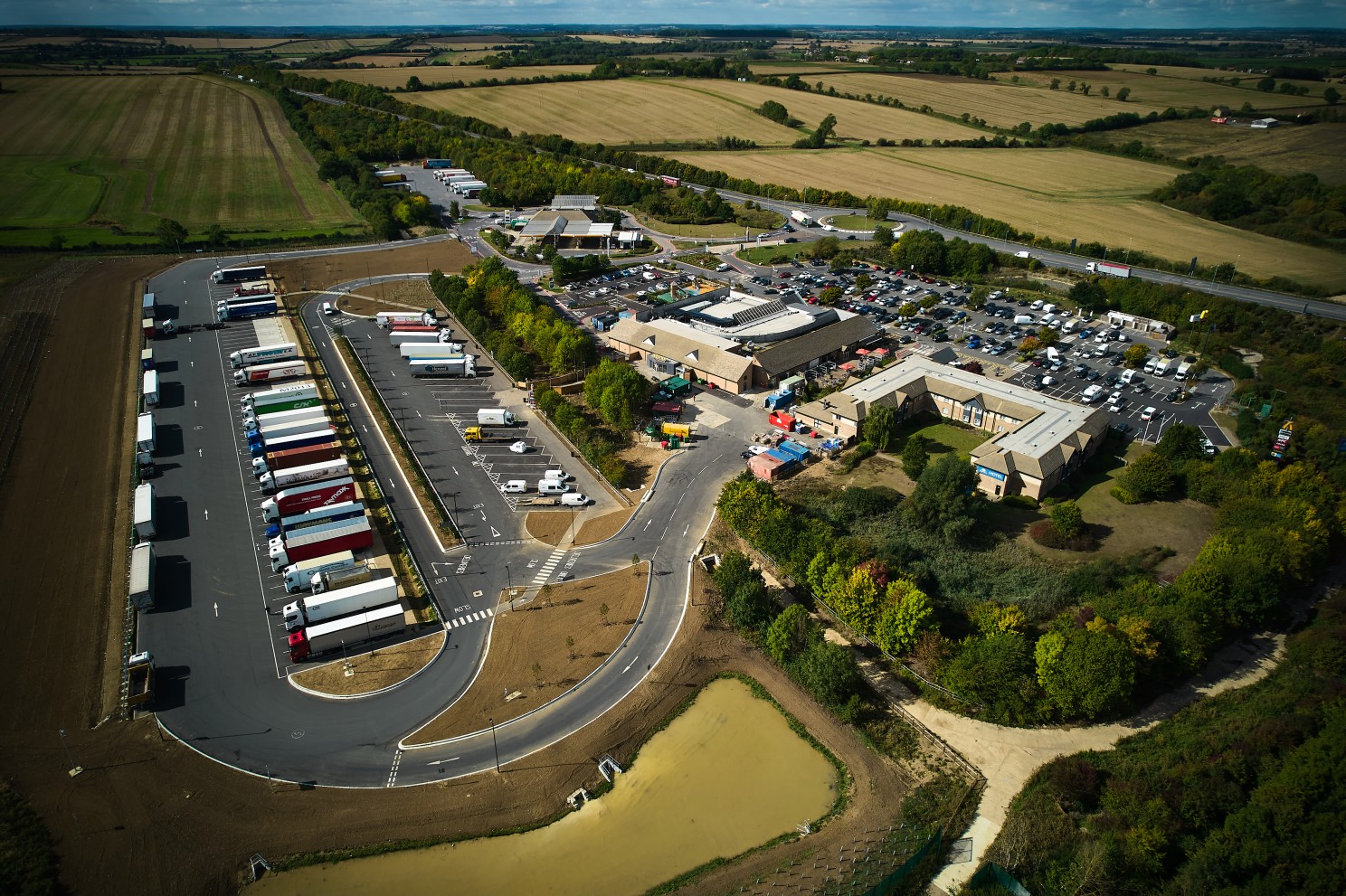
Josh Cousens
Una partnership strategica: L'approccio di SNAP ed Extra al parcheggio dei camion
Creato: 01/08/2024
•
Aggiornato: 13/08/2024
Il direttore Ross Mendenhall spiega come SNAP abbia aiutato Extra Motorway Service Area (MSA) ad aumentare la crescita dei ricavi sulla propria rete fino all'8% annuo, da quando abbiamo iniziato a lavorare insieme nel 2011.
"Un vantaggio fondamentale per noi è che la base clienti SNAP è in continua espansione, permettendoci di raggiungere altri 30.000 potenziali clienti all'anno", afferma Ross Mendenhall, che utilizza SNAP per massimizzare l'attività di parcheggio per camion di Extra.
Ross spiega il suo ruolo in Extra: "Supervisiono la nostra rete di otto MSA in tutta l'Inghilterra, assicurando il miglior ambiente di lavoro e i migliori processi, consentendoci di offrire la massima soddisfazione ai clienti e lavorando in collaborazione con il nostro CEO per assicurarci di concentrarci sulle nostre ambizioni di crescita".
"Lavoro anche a stretto contatto con i nostri fornitori e con i marchi dei locatari per garantire la migliore esperienza possibile a tutti coloro che visitano i nostri MSA".
Aree di servizio extra autostradali
Dopo aver aperto la prima sede a Cambridge nel 2000, Extra è oggi uno dei maggiori operatori di servizi autostradali del Regno Unito. Nell'ultimo sondaggio Transport Focus Motorway Service Users, Extra è stato votato come il primo operatore per soddisfazione dei clienti nel Regno Unito.
Ross afferma: "La nostra filosofia aziendale è incentrata sull'impegno a "fare il passo più lungo della gamba" per offrire esperienze straordinarie a tutti i nostri visitatori.
"In particolare, siamo orgogliosi di offrire un ampio assortimento di alcuni dei marchi di cibo e bevande preferiti nel Regno Unito, pittoreschi spazi all'aperto completi di aree di sgambamento per cani e aree gioco per bambini, oltre a strutture sicure, pulite e di alta qualità per il divertimento di tutti."
Nel 2023, ci saranno 260.066 sessioni di parcheggio SNAP nelle aree di servizio extra-autostradali.

Inserire SNAP
Avendo iniziato a lavorare con SNAP nel 2011, Ross spiega come la partnership abbia aiutato Extra a far crescere il suo servizio di parcheggio per camion. "SNAP ci aiuta a comunicare i nostri servizi chiave agli autisti di mezzi pesanti e alle flotte, fornendo visibilità sulle nostre capacità di parcheggio, carburante e lavaggio.
"Siamo impegnati ad aumentare il tasso di soddisfazione dei conducenti di mezzi pesanti che si fermano da noi e far parte della rete SNAP ci permette di fare proprio questo. Attraverso l'app, possiamo far crescere le nostre partnership e le vendite organiche dando ai clienti uno strumento efficiente per saperne di più sulle nostre strutture, compreso il modo in cui possiamo rendere la loro permanenza piacevole, rilassante e sicura."
Com'è stato il processo di configurazione?
Volevamo scoprire se ci fossero state complicazioni nelle prime fasi della relazione.
Ross dice: "È stato molto semplice. Il team di SNAP è stato a disposizione per rispondere a qualsiasi domanda e, anche una volta completata la configurazione, è stato lieto di ascoltare il nostro feedback su come il sistema potesse essere ulteriormente migliorato per soddisfare meglio le nostre esigenze."
Crescita dei ricavi
Abbiamo chiesto a Ross se SNAP ha aiutato Extra ad aumentare le proprie entrate:
"La nostra partnership con SNAP ci ha aiutato ad aumentare costantemente la crescita dei ricavi, che sono aumentati dell'8% su base annua, con una crescita delle transazioni del 2%.
"I nostri servizi a Cambridge e Peterborough hanno registrato i maggiori miglioramenti su base annua (11% e 12%). Inoltre, i nostri servizi a Peterborough, Leeds e Cambridge hanno tutti un'occupazione superiore al 100%".

Accesso e sicurezza SNAP
Dopo aver collaborato con successo per diversi anni, nel 2018 Extra ci ha chiesto se potevamo contribuire a migliorare le loro strutture di sicurezza.
"Nel corso degli anni abbiamo intensificato la nostra collaborazione con SNAP, investendo in tecnologia CCTV e ANPR per garantire la massima sicurezza.
"L'installazione di tecnologie di sicurezza in tutti e otto i nostri siti ci ha aiutato a proteggere le nostre entrate, garantendo che ogni veicolo paghi per la durata corretta del suo soggiorno.
"L'impatto della collaborazione con SNAP Access & Security è stato quasi immediato, con un aumento registrato delle entrate generate dal parcheggio di circa il 20% dal momento della messa in funzione.
"Inoltre, poiché la sicurezza è una delle priorità degli autotrasportatori quando si fermano per un lungo periodo, siamo lieti di contribuire a rendere il loro soggiorno più piacevole rassicurandoli sul fatto che disponiamo di misure complete per ridurre al minimo il rischio di furto.
"Avere accesso ai cruscotti di business intelligence di SNAP significa anche poter monitorare i dati in tempo reale, permettendoci di fornire la migliore esperienza utente possibile", afferma Ross.
La parte migliore
Per concludere l'intervista, abbiamo voluto chiedere a Ross quale fosse la cosa migliore del lavoro con SNAP:
"Un successo fondamentale per noi è l'impatto sull'efficienza del personale. L'introduzione del sistema ANPR, combinato con i terminali di pagamento, consente agli autisti di usufruire di un'opzione self-service, il che significa che il personale può concentrarsi su altre attività chiave come la pulizia, la manutenzione e il servizio clienti.
"Anche la flessibilità offerta dai terminali di pagamento è una grande attrattiva: gli autisti possono utilizzare i terminali di pagamento in 15 lingue, migliorando l'esperienza dei clienti e riducendo i problemi legati alle barriere linguistiche."
Per saperne di più sui partner del servizio Extra della rete SNAP, visitate oggi stesso la Mappa SNAP . Se offrite strutture di parcheggio per camion e volete entrare a far parte della rete SNAP, scoprite di più [qui] (https://snapacc.com/truck-parks/).



